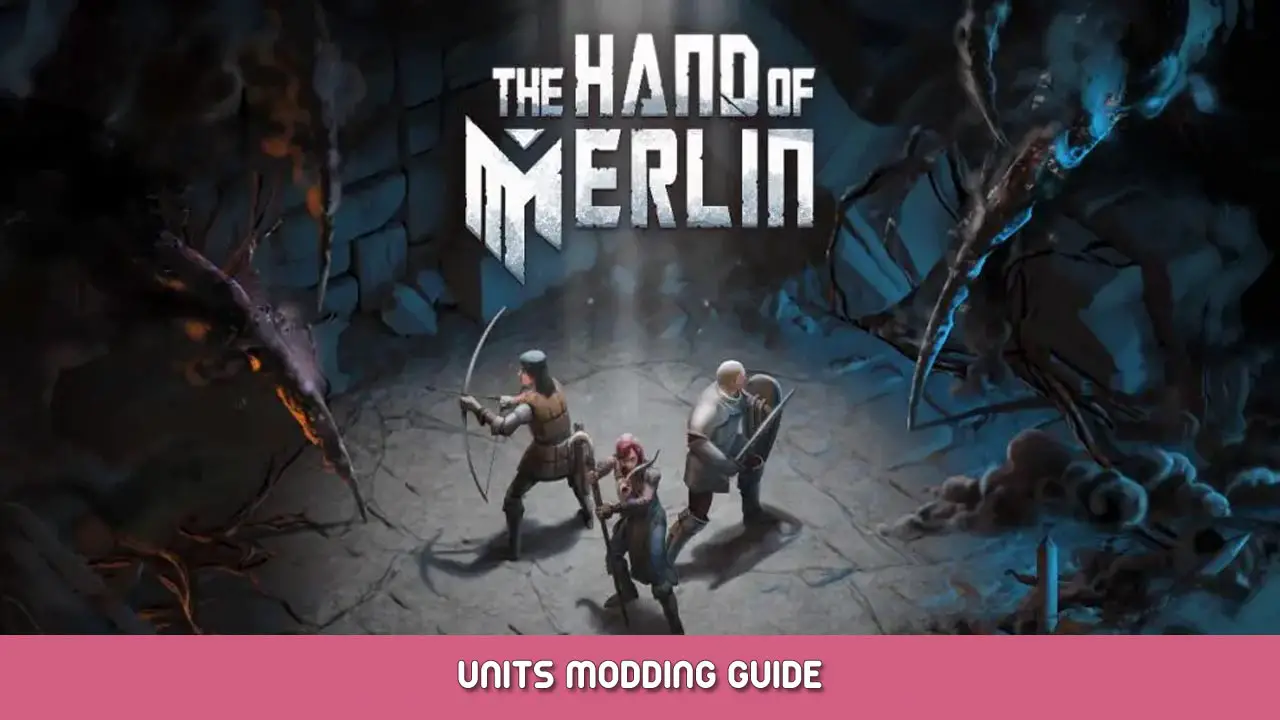Extensive and detailed guide to adding new Units in Рука Мерлина, написано его игровым дизайнером ковриком.
Введение
В этом руководстве, Мы’ll talk about adding more Units to our game. This can be both new characters or new enemies.
What is a Unit?
В Рука Мерлина, a Unit is a dynamic entity capable of taking actions. It has attributes, including Health and Armor, and is always part of a Warband, а “сторона” – Player or Enemy.
Every unit is described with two files: a Unit Params and a Unit Class.
Unit Params
A Params file (from parameters), with the extension .ep, is where we house most of a unit’s visual information and identification.
You can create one with the Create menu (Ctrl+n). Go to the Generic group, and browse the (Мерлин) Unit params type.
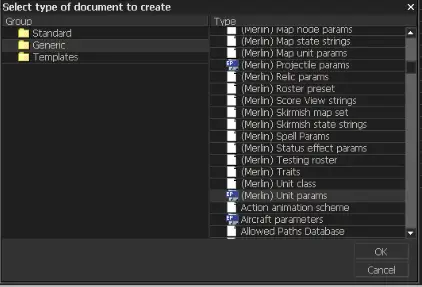
Затем, save the file under the Content/Merlin/Heroes folder for playable units and Content/Merlin/Enemies for those that are not. Using the Heroes folder allows a unit to show up in the roster selection screen in the Lobby.
Сейчас, позволять’s take a good look at a Unit Params file, and explain how each entry works.
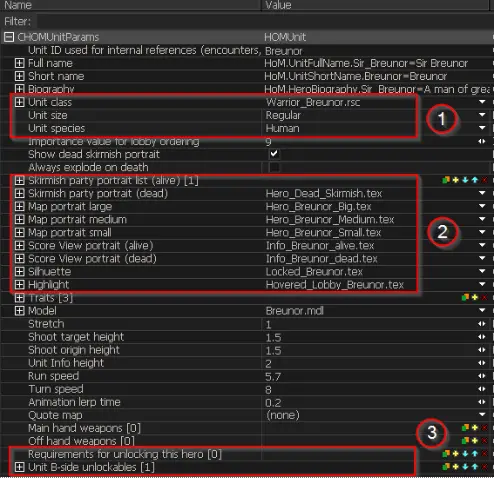
Первый, we have the unit’s identification.
- Identification is used in encounters to refer to a specific unit, also note the Traits in the middle of the document, where you can put “personality traits” for this hero to be queried in encounters.
- Имена are used to represent the unit wherever it is. Short names are usually on portraits, and the full name in the book and larger tooltips. In Breunor’дело, his full name is “Sir Breunor”

- Finally you got the Biography, shown in the Book, which tells a small story about the character.
Note that because these are text entries, they need to have both an identifier and an actual text, to facilitate translations.
Then we come to #1, Единица’s Skirmish behavior.
- Unit Class determines a unit’s attributes, starting abilities, and passives. Это’s an important aspect, и мы’ll talk about that later in this document. Note that every single unit params has a unique class in our design, but this is not obligatory.
- Unit Size determines if the unit will be a 1×1(Обычный) or a 2×2 (Большой) единица.
- Unit Species, used in a myriad of effects, like Holy Desecration. We save “чужак” for the monstrous abominations you fight, but all of your heroes and the bandits are “люди”.
In category #2, ты’ll find Portraits. We got a ton of those, so feel free to check the ones already made to find out the right sizes and styles.
- Skirmish portraits are used in battle, shown in the portrait bars to the left and right. You can put multiple ones in the “живой” category if you want them randomized per unit (we do that with bandits!). И “мертвый” один (which we usually just make a skull will only show if you set it on the checkbox above. В противном случае, the portrait will simply disappear once the unit dies.
- Map Portraits are used in the book, for the warband page and in encounter options.
- Score View is saved for the banner that happens when you finish a fight, such as showing the unit you lost when the fight is won.
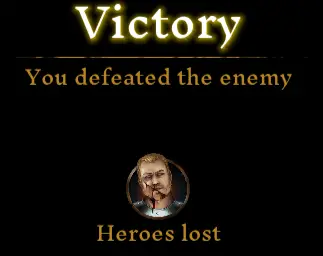
- Выделять и Silhouette are seen in the Hero selection screen, if a character is hovered or still locked.
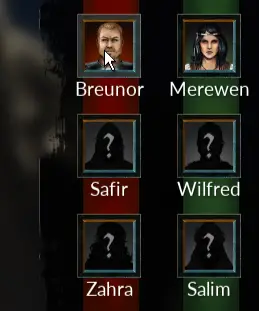
После этого, you have several entries about the unit’с Визуальные эффекты. The .mdl entry handles the actual model and animation information, but the rest configure how the unit behaves in the map. Take particular care when using Shoot Target и Источник, as this governs how the unit interacts with projectiles – where other units try to shoot it, and where its projectiles originate from.
Обратите внимание, что Quote Map и Оружие are deprecated.
Окончательно, we reached #3 – Unlocking behavior.
The first is the requirements to unlock a hero – nothing here means the character is already unlocked. Здесь’s how Rana, например, is set up:

This is a complex entry where you can determine what sort of in-game event needs to happen for a character to be unlocked. Note the obvious Описание вход, but the magic happens when you determine the Event Type. Each event type describes how it works, and then the final 4 entries determine how the event is checked. For the above example, we are listening for >=5 instances of “Spend Currency” событие, but we reset the tracker at the end of every run/session.
To qualify the event, we use the Inspectors. For Rana’s unlock, we set up two: One describes that the currency we’re looking for is Мана, and the other describes that we can only check for events that happen in a specific zone, Альбион. Здесь’s how we did it:

Once you set a Value to Inspect, ты’ll see written in it the information of which other entries we need to fill, as noted in the image above. This takes a bit of trial and error to get right, but all the required information is laid to you in the descriptions (Спасибо, MarkoP!)
Сейчас, B-side Unlocks (Называется “Prowess unlocks” в игре) work in a similar way.

But besides how you actually unlock it (кстати, we use the same unlocking for all characters: just have it complete a run without dying. Check any of our heroes in the Heroes folder for how we set it up), you can put a Имя for this alternate version, add some bonus attributes, and even put an alternate model/texture.
Unit Class
Теперь позвольте’s work on the Сорт. You can use the Create menu, but I suggest you just click on the appropriate entry in the Params file and select “Новый”. Затем, remember to save the new file – мы используем Content/Merlin/UnitClasses folder for that.

Сейчас, the Unit Class file is a bit simpler, but it houses many important configurations. Take a look at Breunor’с:
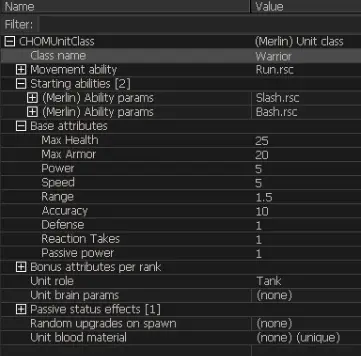
Первый, у тебя есть Class Name. This is only for show. If you want to specify if this class is to be considered a Воин, Рейнджер или Mystic for ability and AI purposes, использовать Unit Role вход, assigning Танк, Нукер и Поддерживать соответственно.
Затем, you have to decide which abilities the unit is able to perform. А Movement Ability, most likely Run.rsc, and then the Starting Abilities. For player characters, we recommend only 2 способности, a base attack (Слэш,Singe and Shoot are our examples) and an extra one, like Bash for our Breunor example.
Если, однако, you are working on an enemy unit, сходить с ума. We recommend up to 5 abilities to keep the AI reasonable.
Затем, you got your Base Attributes, where you can define your unit stats. Pretty self-explanatory if you know the game, but note: “Оборона” refers to evasion, “Reaction Takes” is not used in the current design, и “Passive Power” is a hidden attribute you can use to scale things behind the scenes, but the player has no knowledge of that.
Сейчас, note Bonus Attributes per Rank and Random Upgrades on Spawn. This is how units get stronger or have small variety in their stats.
Bonus Attributes per Rank is only used for player characters. It’s a flat increase added whenever the units level up. Прямо сейчас, this has been set to 0, but you can change that and even add fractional numbers if you want. Вражеские юниты, unable to rank, are not affected by the entries here.
Rankup Bonus (not visible on the screenshot) creates cards on rankup which allow the player to choose which attribute to increase. It’s currently set as 2HP or 1 Armor with an added random card choice between Power, Уклонение, Диапазон, Точность, Movement every 4 уровни. Enemy units also do not gain this.
In The Hand of Merlin, we scale enemy power per zone index, in a file attached to the Random Upgrades on Spawn entry. Чтобы сделать это, we use a structure similar to the Blacksmith Upgrades, where every zone represents a new tier.
В качестве примера, здесь’s MinorAbominationUpgrades, used on Мандрагора, Виверна и Redcap. You can find all others in the Merlin/Enemies/BlacksmithUpgrades папка.

Есть 3 “стили”, to generate some variety. Each style has 4 upgrades *for each zone – Альбион, Marca Hispanica, Al-andalus, Иерусалим). Each entry has a few attribute modifiers. The expanded entry above means that 1 in every 3 Minor Abominations spawned in Jerusalem will have +10 Max Armor, +12 Максимальное здоровье, и +6 Power added to their base stats.
Pretty easy to adjust, Я надеюсь!
Окончательно, if your unit is an enemy unit, assign a Мозг параметр. We talk more about those in their own guide – Artificial Intelligence.
Adding Enemies to a level
Хорошо, last bit. Позволять’s add a character to a level as an enemy, so we can see it spawn. While the creation of maps is covered in another guide, здесь’s a quick rundown on how to add an enemy to one. I recommend checking Content\Merlin\Examples\Gameplay\GameplayTest as a baseline.
- Create/find the Script Object. Это’s represented in-world as an orange cube, but you can press the N key and search for it.
- Duplicate any of the Unit Variables. Inside the script there’s a few CHOMUnitParams already. Just duplicate one and work on the double.
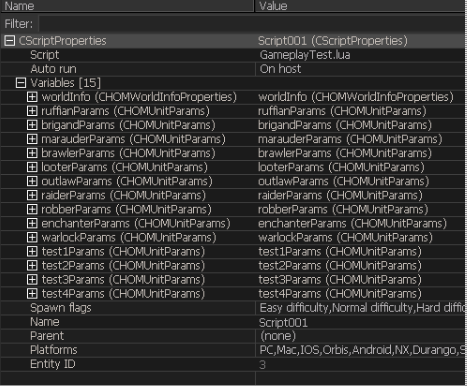
- Browse a new Unit Params file

- Do a bit of scripting inside the .lua file after the initial set up, type in the command
homSpawnUnit(worldInfo, XXXXXX, wbEnemyWarband, worldInfo:GetEnemySpawnPoint(“”, 0))
Where XXXXXX is the name of the params, like warlockParams or test1Params.
Просто так, whenever that skirmish start, the unit will be spawned on a spawnpoint. Make sure there’s no other ones set to the same spawn point, as seen on the Creating new Levels guide.
Testing Characters
A few tips to test out your characters:
- When starting a level from the editor instead of going through the Lobby/Main menu, the game assigns you the characters in the Content\Merlin\Databases\TestingRoster.rsc document, so you can change those characters to the ones you are working on.
- To test enemies, you can use the console to type hom_dbg_bDisableAI = 1, allowing you to control the enemy warband
New units will make your experience even more varied. Веселиться!
Это все, чем мы делимся сегодня для этого. Рука Мерлина гид. Это руководство было первоначально создано и написано Mids. На случай, если нам не удастся обновить это руководство, вы можете найти последнее обновление, следуя этому связь.
